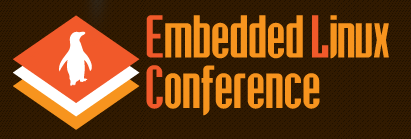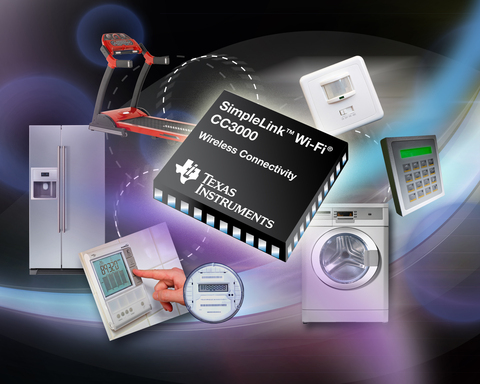The full schedule for AnDevCon III (14-17 May 2012) has finally been released with 42 different classes and several workshops. The sessions will be organized into five subject area: Developer Essentials: These technical classes and workshops are for all Android developers and cover all programming topics. Android Enterprise: These technical sessions cover topics specific to building and managing apps for employees, business customers and partners, such as back-end integration corporate data center communications, ERP or CRM systems. Android Business: These classes and workshops are for entrepreneurial developers who want to learn the most effective ways of distributing and selling Android apps, including how to maximize profit through the Android Market. Android Tablets and beyond: These classes and workshops are specific to commercial devices beyond smartphones, including tablets, Google TV, and other platforms. Embedded Android: These classes and workshops are for developers working close to the hardware, such as on custom […]
Embedded Linux Conference 2012 Schedule
The Embedded Linux Conference (ELC 2012) will take place on February 15 – 15, 2012 at Hotel Sofitel in San Francisco. ELC consists of 3 days of presentations, tutorials and sessions. There will be over 50 sessions during those 3 days. I’ll highlight a few sessions that I find particularly interesting. February 15 10:30 – 11: 30 – Profiling and Performance Measurement Techniques Using Linux Kernel Tools by Govindraj Raja, Software Engineer at Texas Instruments and Partha S Basak, Technical Manager at Texas Instruments. With ever growing features and functionality of Linux kernel, one needs methods to trace and profile parts of Linux kernel for various reasons like performance analysis, debugging etc. This presentation aims at providing an insight into few of these tools and their salient features. Supporting use case data as captured on open source OMAP4 pandaboard is also provided. 14:00 – 15:00 – The Yocto Project Overview […]
Freescale i.MX6 Automotive & Aerospace Infotainment Applications
Freescale showcased i.MX6 Series (ARM Cortex-A9) based in-vehicle infotainment (IVI) systems at CES 2012. Charbax (armdevices.net) has an interesting interview, where they show IVI products based on Freescale i.MX6 series running QNX operating system with the dashboard, a control panel and a tablet for the back seats. There are also some impressive 3D demos as well as real-time 3D modelling of the car thanks to 360 cameras and OpenCL support in the iMX6 GPU. 3D modelling allows the driver to see a top view of the car while parking in narrow spaces. Freescale provides Long Term Support (LTS) for processors used in the automotive and aerospace industries and the company has committed to 15 years of support for the i.MX6 series.
TI SimpleLink Wi-Fi CC3000 Brings WiFi Connectivity to All Devices
Yesterday, Texas Instruments unveiled the SimpleLink product family, a portfolio of wireless connectivity technologies for low-power, low-cost embedded applications, which includes self-contained wireless processors supporting Wi-Fi, ZigBee, 6LoWPAN, and ANT. The most noticeable product is the SimpleLink Wi-Fi CC3000, a self-contained 802.11 (WiFi) network processor, that can be added to any embedded application and provide WiFi connectivity to the Internet of Things. With this solution, you can add WiFi to any device, even those powered by MCUs without operating systems such as dishwashers, toasters, refrigerators, thermostats, and factory automation equipment. I wish they’ll make new version of the MSP430 Chronos Wireless Watch with WiFi connectivity, this would remove the need for the RF Dongle. This solution features TCP, UDP and IP software stacks in the chip, it consumes 0.5% of the resources as compared to traditional Wi-Fi and only requires 6KB Flash and 3KB RAM. The company claims it can be […]
Xibo Digital Signage in Raspberry Pi Emulator (Step 1)
Xibo (pronounced eX-E-bO) is an open source, multi-display, multi-zone, fully scheduled digital signage client/server solution written in Python and dotNET. If you are not familiar with Xibo you can visit http://xibo.org.uk/ or/and read my introduction XIBO: An Open Source Digital Signage Server/Client. The Raspberry Pi is a low cost board based on Broadcom BCM2835 (ARM1176 Core) that should be available for sale at the end of January / beginning of February at http://www.raspberrypi.com. There are two versions of the board: Model A: 128 MB RAM and no Ethernet Model B: 256 MB RAM with 10/100 Mbit Ethernet BCM 2835 also features a Videocore GPU supporting OpenGL and 1080p30 video decoding that makes it ideal for multimedia applications such as digital signage players. The board support both HDMI and composite video output. You should also be able to connect a LCD via the DSI interface. If we can make Xibo run […]
Cross-compiling libavg 1.7 for ARM on Debian
libavg is a high-level development platform for media-centric applications using Python as scripting language and written in C++ and I’ve already written a post to cross-compile libavg 1.6 in Ubuntu (with linaro cross toolchain) and using Beagleboard qemu image. Since I’ve doing some preparation work to have software running on the Raspberry Pi and that the latter won’t support Ubuntu, I’ve had to cross-compile it again. This time, I’ve found a cleaner way to do the cross-compilation with dpkg-cross and xapt tools which can load the required armel package to the arm toolchain. Those tools really make life easy, as previously (a few years ago), I would have had to cross-compile all dependencies manually. Here are the steps I followed: Install Emdebian ARM Cross Toolchain and Tools in Debian. Download libavg 1.7 source code
|
1 |
wget http://www.libavg.de/raw-attachment/wiki/DownLoad/libavg-1.7.0.tar.gz |
Extract it
|
1 2 |
tar xzvf libavg-1.7.0.tar.gz cd libavg-1.7.0 |
Install the following armel development packages: sudo /usr/share/pdebuild-cross/xapt -a armel libpango1.0-dev libavformat-dev […]
Android and Tizen on Intel Medfield Atom Z2460 (Video Interview)
Intel announced the MedField Soc (Atom Z2460) targeted at smartphones and tablet and showcased a smartphone reference design running Android based on this platform. Mike Bell GM of Intel’s Mobile Communications Groups (MCG) has been interviewed by EETimes. He talks about Intel entry into the mobile phone market and explains that MedField boasts similar power consumption than top competitors with better performance (3 to 4 times faster in some web browser benchmark). He mainly talks on what they have done to port Android on the platform (and shows Angry Bird a lot) and what you may expect in the future. He also quickly mentioned Tizen. Here’s the original EETimes’ article.
Samsung Merges Bada OS With Tizen
Samsung has announced that it was merging Bada operating system with the new Tizen project (Linux OS with HTML5 API) at CES 2012. The work has already started, but Samsung did not provide any estimated completion date. If you have been developing Bada applications, the good news is that Tizen will support mobile applications written with bada’s SDK (software development kit) and previously published bada apps will be backwards compatible. Bada and Tizen developers will be given the same software tools (SDKs and APIs) so that if you know how to program in Bada, you will also be able to make Tizen apps. Samsung expects Tizen will be used in entry-level smartphone powered by single core processors as well as other devices targeted by Tizen such as tablets, smart TVs, netbooks and In-vehicle infotainment (IVI) devices. One or two Tizen devices should be released in 2012, and the company said […]








